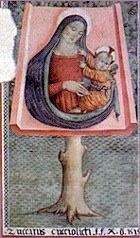

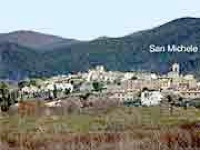

The campanile (1704-16), which originally formed part of the fortifications, was rebuilt after the earthquake of 1703.
Interior
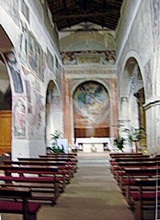
The church has a nave and two aisles, with two dividing walls pierced by arches.
The two naves were re-vaulted in 1951-2. This new vaulting was removed from the main nave in 1995, at which point frescoes were discovered high up on its walls.
Frescoes (15th century)
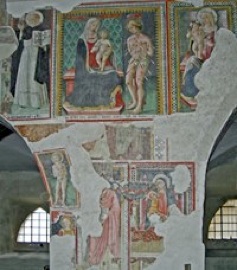
Frescoes by the Maestro di Eggi
Federico Zeri (1963) designated a number of frescoes in the church as the autograph works of the Maestro di Eggi. One of the defining characteristics of the work of this artist is the distinctive physiogamy. This group includes:
-
✴St Michael (1448), a particularly fine fresco below the two illustrated above, which is dated by inscription;
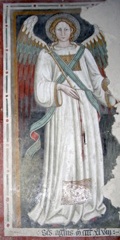
-
✴the Madonna and Child and St Catherine of Alexandria, on the left wall;
-
✴two frescoes of the Madonna and Child, on the outer surface of the first arch between the nave and the left aisle;
-
✴the Madonna and Child (1451), on the outer surface of the second arch between the nave and the left aisle;
-
✴St Bernardino of Siena, [where ??]

-
✴St Lucy, under the second arch between the nave and the left aisle.
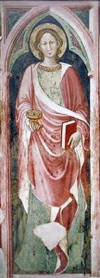
St Helen (1474)
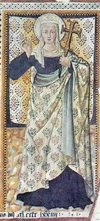
Madonna della Quercia (1515)
